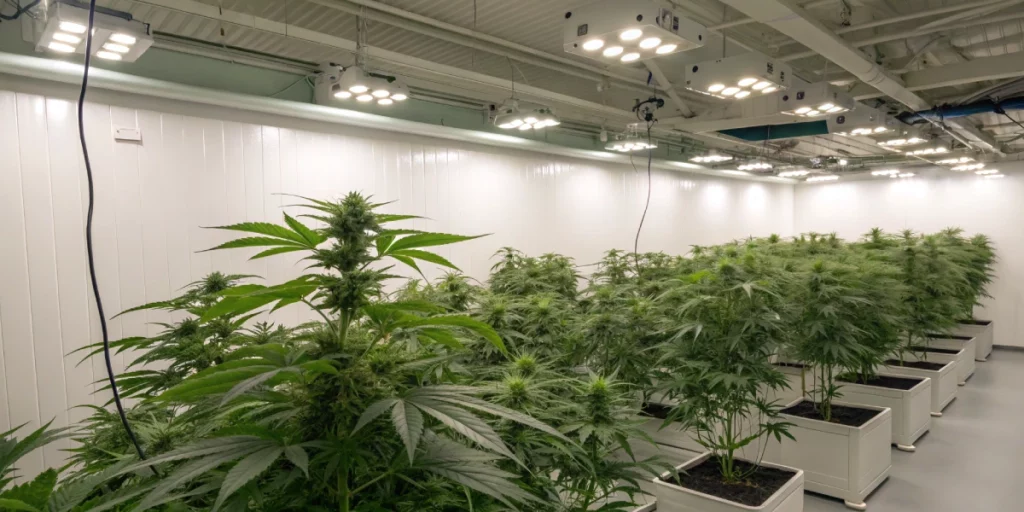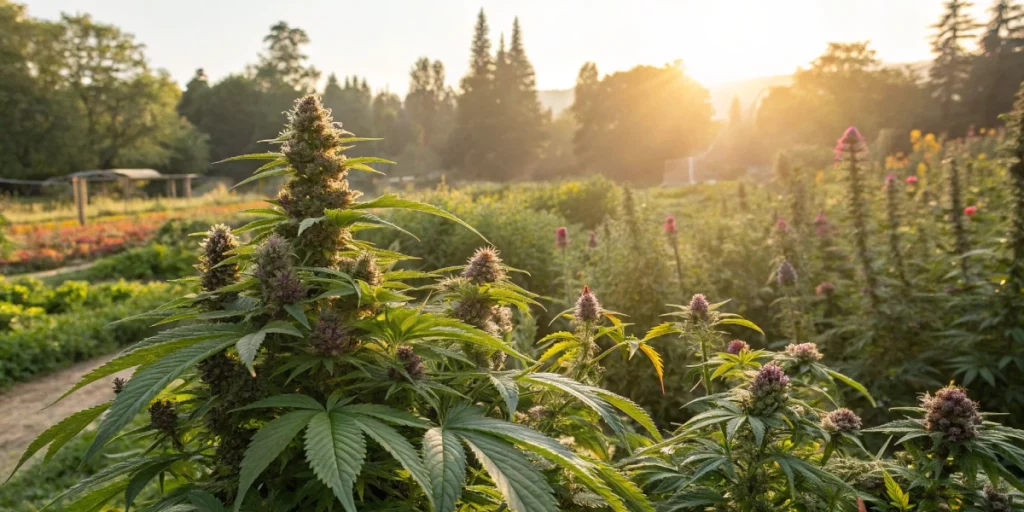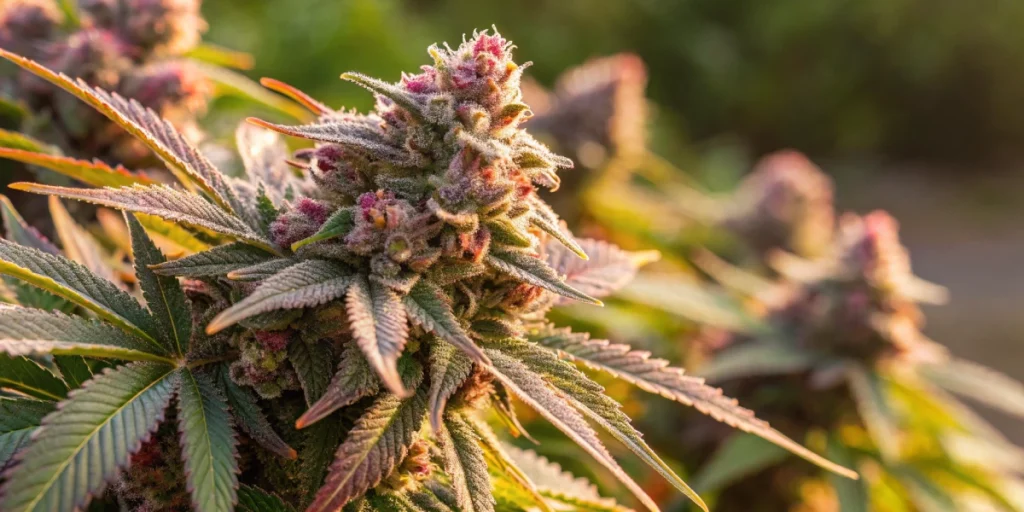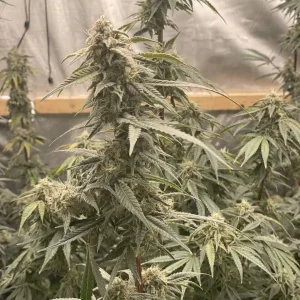Fastberry Auto strain: Exceptional Genetics and Effects
Origins and Genetics
Fastberry Auto strain originates from a meticulously selected blend of premium genetics that combine robust indica traits with vibrant sativa energy. This hybrid’s auto-flowering nature allows it to flower based solely on age, which simplifies cultivation and makes it perfect for limited spaces. Its compact growth habit and predictable development ensure that every cycle produces consistent, impressive yields that satisfy both new and experienced growers.
The stable genetic foundation of Fastberry Auto strain has been refined over many generations. Its lineage is engineered to produce dense, resinous buds bursting with unique flavors and potent effects. Growers appreciate its reliable performance, as the strain consistently delivers high-quality crops that embody the best characteristics of both parent strains.
Effects and Potency
Fastberry Auto strain provides a balanced high that uplifts the mind while gently relaxing the body. Users report that its effects are energizing and clear-headed, making it ideal for creative tasks during the day without the overwhelming sedation often associated with other strains. The sensation is smooth and steady, offering a delightful buzz that keeps you alert and focused.
In addition, the potency of Fastberry Auto strain is maintained through careful breeding practices. The THC levels remain moderate to high, ensuring that each harvest delivers a powerful yet manageable effect. This consistent potency, combined with its unique flavor profile, gives users a rewarding sensory experience that is both stimulating and satisfying.
Environmental Requirements for Growing Fastberry Auto strain
Setting Up the Growing Cannabis Space
Creating an optimal grow space is the foundation for a successful Fastberry Auto strain crop. Start with a well-organized area that features proper ventilation, controlled lighting, and stable temperature and humidity. Whether using a dedicated grow room, a compact tent, or a small indoor setup, ensure the space is clean and equipped with essential tools such as fans, carbon filters, and timers. A carefully arranged environment minimizes stress on the plant and promotes vigorous growth from seed to harvest.
A thoughtfully designed space maximizes light distribution and airflow. This setup not only supports healthy plant development but also simplifies routine maintenance like watering and monitoring. When every element is in place, your Fastberry Auto strain can thrive, ultimately yielding a robust crop of aromatic buds that impress every time.
Temperature and Humidity
During the vegetative stage, maintain temperatures between 70°F and 80°F to promote strong growth; during flowering, slightly lower temperatures can enhance resin production. Keep humidity levels around 50–60% in early growth and reduce to 40–50% during flowering to prevent mold and mildew, ensuring efficient nutrient uptake and consistent development.

Indoor Cannabis Cultivation
Advantages of Growing Indoors
Indoor cultivation provides complete control over every environmental factor, which is particularly beneficial for Fastberry Auto strain. This method protects the plant from unpredictable weather and pest invasions while allowing precise adjustments to light, temperature, and humidity. With every variable—from nutrient delivery to airflow—managed meticulously, you achieve uniform, high-quality buds even in small spaces.
Moreover, indoor setups allow for year-round production regardless of seasonal changes. Whether you are growing in a compact room or a dedicated grow space, the controlled conditions ensure that Fastberry Auto strain consistently produces robust yields. The ability to fine-tune every aspect of the environment means you can maximize resin production and overall bud quality without unexpected interruptions.
Lighting Needs
For indoor growing, proper lighting is essential to maximize bud formation and overall yield. Full-spectrum LED or HPS lights provide the energy needed for vigorous vegetative growth and dense bud development during flowering. Position the lights at an optimal distance from the plant canopy to avoid heat stress while ensuring even distribution of light. This setup promotes efficient photosynthesis and enables Fastberry Auto strain to reach its full potential.
Outdoor Cannabis Cultivation
Best Conditions for Outdoor Growth
When cultivated outdoors, Fastberry Auto strain flourishes under sunny, warm conditions with ample natural airflow. Choose a location that receives at least six hours of direct sunlight daily; natural light enhances terpene production and intensifies the strain’s unique flavor profile. Ensure the soil is well-draining and enriched with organic matter to support vigorous growth and maximize yield.
A favorable outdoor environment also requires protection from extreme weather conditions such as heavy winds or intense rain. Selecting a sheltered spot that still offers plenty of sunlight ensures that Fastberry Auto strain develops robustly, resulting in high-quality buds that mirror the best qualities achieved indoors.
Advantages of Growing Fastberry Auto strain
Growing Fastberry Auto strain offers numerous benefits for both novice and experienced cultivators. Its rapid growth cycle and auto-flowering trait simplify cultivation, allowing for multiple harvests in a single year. This efficiency makes it particularly attractive for growers with limited space or time, as it produces consistent, impressive yields with minimal fuss.
Furthermore, the strain’s compact growth habit makes it ideal for urban settings and small-scale operations. The high yield potential in confined spaces ensures that every square inch of your grow area contributes to a bountiful harvest. Fastberry Auto strain is celebrated for its ease of cultivation and the consistent quality of its aromatic, resinous buds.
Problems in Cultivating Fastberry Auto strain
Overwatering
Overwatering is a common pitfall that can damage the delicate root system of Fastberry Auto strain. Excess moisture may lead to root rot and fungal infections, which stunt growth and reduce yield. It is essential to allow the soil to dry slightly between waterings and use containers with proper drainage to maintain an optimal moisture balance. Adjust your watering schedule based on the plant’s actual needs to avoid overhydration.
Pest Infestations
Pests such as spider mites, aphids, and thrips can quickly undermine the health of Fastberry Auto strain if not controlled. Regular inspections and the use of organic pest control measures help keep these threats in check. Early detection and prompt treatment are vital to prevent infestations from spreading, ensuring that the plant remains healthy and continues to produce high-quality buds.
Similar Strains
Lemon Drizzle
Lemon Drizzle is known for its pungent citrus aroma combined with robust, euphoric effects. It delivers a classic lemon flavor with hints of earthiness, producing dense, resinous buds in a compact, auto-flowering format. Its reliable performance and fast growth make it an excellent alternative for growers seeking a strain with a strong citrus profile similar to Fastberry Auto strain.
Lemon Haze Auto
Lemon Haze Auto offers a tangy, vibrant lemon flavor paired with a clear-headed, uplifting high. This strain features auto-flowering genetics that ensure a quick, hassle-free cultivation process. Its aromatic, resin-rich buds provide a balanced effect that energizes while gently relaxing the body, making it an ideal choice for those looking for an invigorating, citrus-forward alternative.
Purple Lemonade Auto
Purple Lemonade Auto is another standout strain on buycannabisseeds.net that delivers a refreshing, sweet lemon taste with subtle skunky undertones. It boasts rapid flowering and compact growth, producing high-quality, dense buds that yield a balanced high. This strain is perfect for urban growers or those with limited space who want an easy-to-cultivate, citrus-infused alternative with consistent performance.
Week-by-Week Growth Plan for Fastberry Auto strain
Week 1 – Germination and Seedling Stage
Begin by soaking Fastberry Auto strain seeds in water for several hours, then place them between moist paper towels in a warm, dark environment until taproots emerge. Gently transfer the seeds into small pots with a well-draining medium, and maintain consistent warmth and humidity to establish a robust root system that lays the foundation for future growth.
Week 2 – Early Seedling Growth
In week two, the seedlings develop their first true leaves and slowly increase in size. Provide gentle, indirect light and keep the soil moist but not waterlogged to support healthy photosynthesis. This stable environment helps the seedlings build the strength they need for rapid development in later stages.
Week 3 – Continued Seedling Development
During week three, the seedlings continue growing larger and developing an extensive root system, with additional sets of leaves emerging steadily. Increase light exposure gradually and maintain a consistent watering schedule to support steady development, ensuring that the plant’s structure becomes strong in preparation for the vegetative phase.
Week 4 – Vegetative Growth Begins
At the start of week four, Fastberry Auto strain enters the vegetative phase, showing noticeable increases in size and vigor. Leaves expand and stems thicken as the plant establishes a solid framework. Adjust light intensity and initiate a structured watering schedule with a low dose of nitrogen-rich fertilizer to stimulate rapid vegetative growth and lay a strong foundation.
Week 5 – Accelerated Vegetative Growth
During week five, vegetative growth accelerates as the plant produces abundant foliage and stronger branches. Continue regular feeding and maintain steady watering while gently applying low-stress training techniques to shape the canopy. This rapid expansion sets the stage for a robust structure that will support heavy bud formation in later stages.
Week 6 – Preparing for Flowering
In week six, early signs of flowering appear as small bud formations begin to emerge, and subtle changes in leaf coloration become evident. Adjust the nutrient regimen by reducing nitrogen and increasing phosphorus and potassium to support bud initiation. Continue low-stress training and monitor environmental conditions closely to prevent stress during this critical transition.
Week 7 – Transition to Flowering
Week seven marks the clear transition into the flowering phase as indoor growers switch to a 12-hour light and 12-hour dark schedule. Small buds begin to form as the plant shifts its energy from vegetative growth to bud production. Adjust nutrient delivery to favor bloom-specific supplements and maintain stable conditions to ensure a smooth transition.
Week 8 – Early Flowering
During week eight, the early stages of flowering become more pronounced as buds form and increase in density. The plant channels energy into thickening bud clusters, while nutrient delivery is fine-tuned to support this development. Regular monitoring helps ensure that the buds grow without stress, setting a solid foundation for the mid-flowering phase.
Week 9 – Mid-Flowering
In week nine, buds become more prominent as resin production increases and trichomes begin shifting from clear to milky. Adjust nutrient management to support robust bud development while avoiding nutrient burn, and conduct frequent inspections to ensure optimal environmental conditions during this pivotal phase of flowering.
Week 10 – Bud Development
By week ten, the buds are well-formed and continue maturing in both density and size. The plant’s resin production intensifies, and its aromatic profile becomes more pronounced, adding complexity to the flavor. Maintain steady nutrient management and a stable environment to support full bud development, ensuring every bud reaches its maximum potential.
Week 11 – Late Flowering
During week eleven, the plant enters the late flowering phase, with trichomes beginning to shift further to include hints of amber. Buds become denser and more resinous, signaling that the optimal harvest window is approaching. Continue to balance nutrient delivery and maintain stable conditions, addressing any last-minute issues promptly to consolidate the crop’s overall quality.
Week 12 – Harvesting Time
Week twelve is when Fastberry Auto strain is ready for harvest. At this stage, trichomes display a mix of milky and amber hues, and the buds are dense and richly resinous. Carefully cut the plant, trim away any excess foliage, and hang the branches in a dark, well-ventilated area to dry for 7–10 days, preserving both flavor and potency.
Week 13-14 – Curing the Buds
During weeks thirteen and fourteen, focus on curing the harvested buds to enhance their flavor and potency. Once dried, transfer the buds into airtight glass jars and open the jars daily during the first week to release excess moisture, gradually reducing the frequency. This careful curing process stabilizes the buds and refines their profile, resulting in a premium final product that reflects the dedicated care throughout the entire growth cycle.

FAQs about Fastberry Auto strain
What is the typical THC content of Fastberry Auto strain?
Fastberry Auto strain typically contains THC levels ranging from 18% to 24%. This balanced potency provides an uplifting high that stimulates creativity while offering gentle body relaxation. The consistent cannabinoid profile is maintained through precise breeding and cultivation practices, ensuring each harvest delivers a satisfying experience without overwhelming sedation, appealing to both recreational and medicinal users.
How long does it take for Fastberry Auto strain to flower?
Fastberry Auto strain generally flowers within eight to ten weeks after switching to a 12/12 light cycle. This relatively short flowering period makes it ideal for growers seeking quick turnovers and efficient production. The auto-flowering trait ensures a smooth transition from vegetative growth to bloom, resulting in consistent, high-quality yields that are especially attractive for cultivators with limited space or time.
What flavor profile can I expect from Fastberry Auto strain?
Fastberry Auto strain offers a complex flavor profile that combines bright, tangy citrus notes with subtle herbal undertones. Its aromatic buds deliver a crisp, refreshing taste that evolves on the palate, providing a memorable sensory experience. The balanced flavor complements its uplifting yet gentle high, ensuring every session is both invigorating and satisfying for cannabis enthusiasts.





